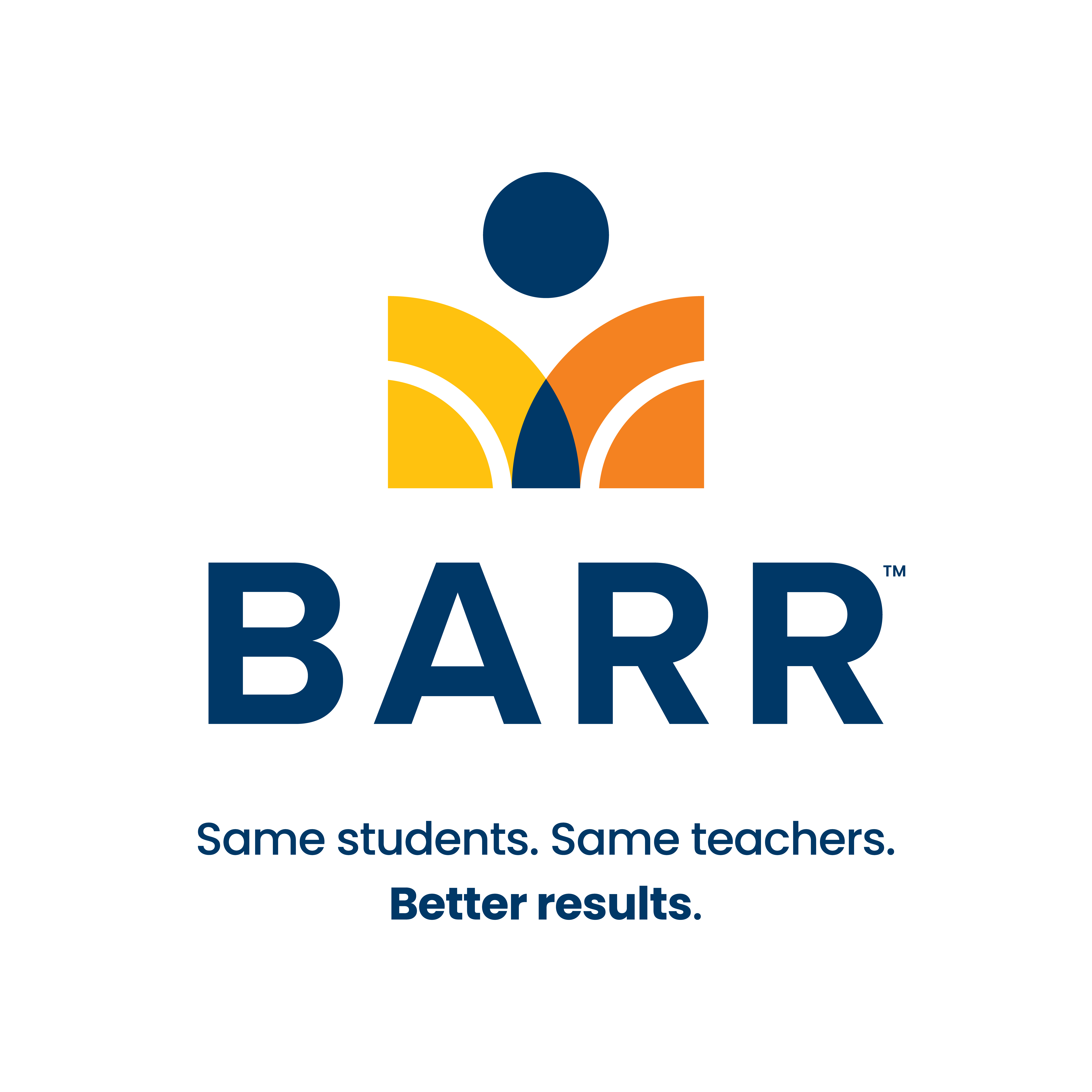 What is BARR?
What is BARR?
About BARR Founded in 1999, BARR (Building Assets, Reducing Risks) is a K-12 coaching and training partner with a quarter-century track record of raising student math and reading scores, increasing teacher satisfaction and retention, decreasing chronic absenteeism, and decreasing student disciplinary incidents and suspensions. BARR provides an innovative system that disrupts the factory model inherited by schools. BARR’s core belief is that students and staff are incredibly talented, and we need the system they work in to support their success. At the first BARR school, by focusing on creating strong relationships and real-time data, the 9th-grade student failure rate had decreased from 44% the previous year to 20%. The BARR system uses eight interlocking strategies that build intentional relationships (staff to staff, staff to student, and student to student) and utilizes real-time data to enable schools to achieve concrete academic, and non-academic outcomes for every student. These strategies align with the DOE’s whole-student approach and work across the Department. The focus of BARR is not just for some students but all students. Teachers reported increased collaboration, satisfaction, and their ability to use data effectively. School culture and climate were improved. Today, BARR operates in nearly 500 schools nationwide and works in all grade levels, K-12, including in more than 100 schools here in Maine.
- BARR in Maine Annual Briefing (2024-2025)
- BARR in Maine Annual Briefing (2023-2024)
The BARR system uses eight interlocking strategies that build intentional relationships (staff to staff, staff to student, and student to student) and utilizes real-time data to enable schools to achieve concrete academic, social, and emotional outcomes for every student.
These strategies align with the DOE’s whole-student approach and work across the Department.
Careful implementation and evaluation continued for over 20 years, all with the same findings – students passed more classes, pursued more advanced courses, and graduated on time. The focus of BARR is not just for some students but all students. Teachers reported increased collaboration, satisfaction, and their ability to use data effectively. School culture and climate were improved. Today, BARR operates in over 250 schools nationwide and works in all grade levels, K-12, including in dozens of schools here in Maine.
BARR Fast Facts |
BARR's 8 Interconnected Strategies |
|
|
|
|
Resources
Contact
Page Nichols
Chief Innovation Officer
Phone: 207-592-1216
Email: Page.nichols@maine.gov